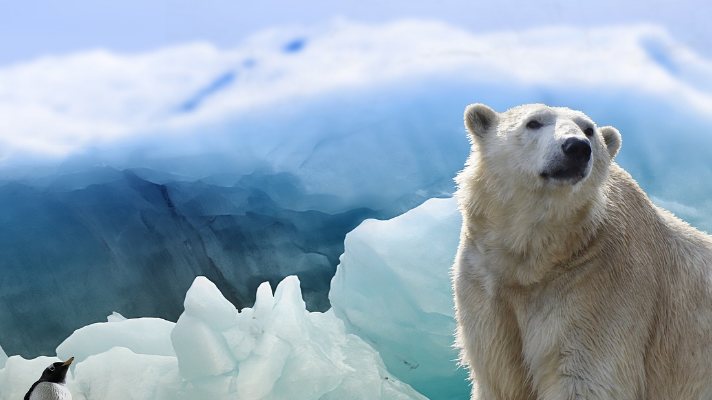polar bear facts
Introduction
Polar bears, the magnificent creatures of the Arctic, captivate our imagination with their beauty, strength, and unique adaptations. In this article, we delve into the fascinating world of polar bears, uncovering ten intriguing facts that will leave you in awe of these Arctic icons.
1. Masters of the Arctic
Polar bears (Ursus maritimus) reign supreme as the largest land predators on Earth, perfectly adapted to their icy habitat. With their massive bodies, sharp claws, and powerful jaws, they embody the apex of Arctic adaptation.
2. A White Camouflage
The polar bear’s iconic white fur is not actually white; it’s transparent! Each individual hair is hollow, filled with air, and reflects light, giving the illusion of a pure white coat. This exceptional adaptation provides them with effective camouflage while hunting seals on the sea ice.
3. Born Swimmers
Polar bears are born swimmers, equipped with natural instincts to navigate the icy waters of the Arctic. They effortlessly paddle through the frigid seas, aided by their partially webbed paws, which act as efficient paddles, propelling them forward with grace and speed.
4. Powerful Sense of Smell
When it comes to olfactory prowess, polar bears are second to none. Their highly developed sense of smell enables them to detect seals from miles away, even beneath layers of snow and ice. This remarkable ability helps them locate breathing holes and cracks in the ice, ensuring a successful hunt.
5. Feasting on Seals
Seals form the primary diet of polar bears. Using their patience, agility, and strategic positioning near seal breathing holes, polar bears wait for their prey to emerge. Once a seal is within striking distance, they employ their powerful forelimbs to deliver a swift and lethal blow, ensuring a vital source of sustenance in the harsh Arctic environment.
6. Arctic Survivors
Surviving in the Arctic requires adaptability and resilience. Polar bears possess a thick layer of blubber that acts as insulation, keeping them warm in the freezing temperatures. Additionally, their fur and dense undercoat provide exceptional insulation, preventing heat loss and maintaining body temperature even in the harshest conditions.
7. Maternal Instincts
Female polar bears exhibit extraordinary maternal instincts. After mating, pregnant females create dens in snowdrifts or on the sea ice, where they give birth and nurture their cubs. During this period, the mother sustains herself on her stored fat reserves while providing vital warmth and nourishment to her vulnerable young.
8. Threats to Polar Bears
Despite their inherent resilience, polar bears face numerous challenges in the modern world. Climate change has resulted in the loss of sea ice, reducing their hunting grounds and forcing them to swim longer distances. Habitat loss, pollution, and disturbances caused by human activities pose significant threats to their survival.
9. Conservation Efforts
To safeguard the future of polar bears, conservation initiatives play a crucial role. Organizations and governments worldwide are working diligently to protect their habitat, regulate hunting, and raise awareness about the importance of mitigating climate change. By supporting these efforts, we can contribute to the long-term survival of these magnificent creatures.
10. Coexisting with Nature
As responsible inhabitants of this planet, it is our duty to strive for harmonious coexistence with the natural world. By embracing sustainable practices, reducing our carbon footprint, and respecting wildlife, we can ensure the continued existence of polar bears and the preservation of our fragile ecosystems.
Conclusion
Polar bears stand as awe-inspiring symbols of the Arctic’s beauty and grandeur. Their remarkable adaptations, hunting prowess, and maternal instincts are testaments to the wonders of nature. As we unravel the mysteries surrounding these majestic creatures, let us also remember our responsibility to protect and preserve their fragile habitat.
FAQ
Q. Do polar bears live in Antarctica?
Answer
Polar bears live in the Arctic, but not Antarctica.
Q. Where do polar bears sleep at night?
Answer
On a flat surface, the polar bear will lie on its stomach.
Q. Can polar bears swim well?
Polar bears are great swimmers; they swim across bays or wide leads without hesitation. Polar bears can swim underwater for a few hours to a whole day.








